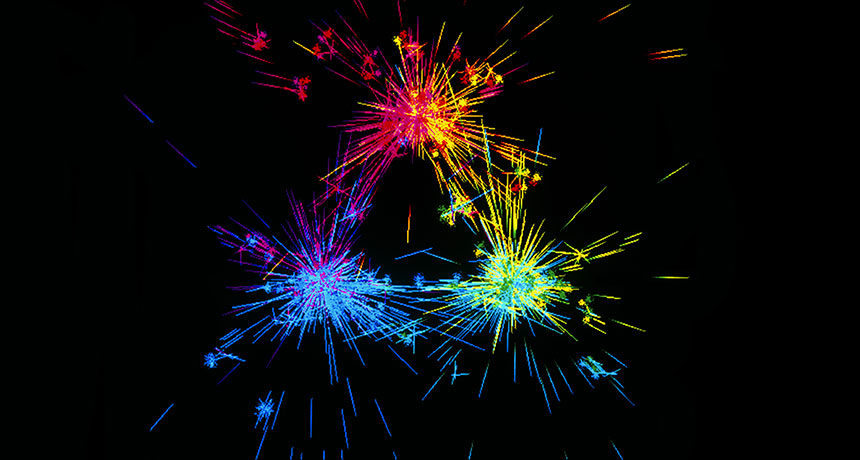The inside of a proton endures more pressure than anything else we’ve seen

Pity the protons: Those little particles are under a lot of pressure. Protons’ innards are squeezed harder than any other substance we have measured, a new study finds.
“It’s really the highest pressure we have ever seen,” says physicist Volker Burkert, a coauthor of the study, published in the May 17 Nature. Protons break the pressure record set by neutron stars, the incredibly dense dead stars that can form when a massive star explodes and its core collapses, squeezing more mass than the sun’s into a remnant the size of a city.
The pressure in the proton’s center averages a million trillion trillion times the strength of Earth’s atmospheric pressure, report Burkert and colleagues, from Thomas Jefferson National Accelerator Facility in Newport News, Va. That’s around 10 times the pressure found inside a neutron star. Previously, scientists had theoretically predicted that such pressures might occur inside protons, but the new result is the first experimental proton pressure gauge.
In proton research, the particle’s internal pressure distribution has been a largely unexplored frontier, even though pressure is one of the proton’s fundamental properties. “It’s as important as electric charge or mass,” says physicist Peter Schweitzer of the University of Connecticut in Storrs, but was unknown until now.
Protons are made up of smaller particles including quarks, which are electrically charged, and gluons, which transmit the strong nuclear force that holds protons together (SN: 4/29/17, p. 22). In the center of this ball of particles, Burkert and colleagues report, an intense pressure pushes outward. But this record-breaking outward force is kept in check by an inward pressure from the outer regions of the particle.
This pressure pattern parallels what happens in much larger objects: “In some sense, it’s looking like a star,” says physicist Oleg Teryaev of the Joint Institute for Nuclear Research in Dubna, Russia. Stars also have pressures that push outward in their centers, which counteract the inward pull of gravity.
Protons are held together by the strong force, just as stars are held together by gravity. But the tiny protons are a different beast. So “it’s natural, but it’s not completely trivial” that the two objects would have similarities pressure-wise, Teryaev says.
To quantify the proton’s squeeze, the researchers used data from a particle detector known as CLAS, short for the Continuous Electron Beam Accelerator Facility Large Acceptance Spectrometer, located at Jefferson Lab. In experiments with CLAS, scientists shot electrons at liquid hydrogen, a plentiful source of protons, and watched what happened as electrons interacted with the protons’ constituents and ricocheted away. The new measurement is based on data from 2015 that was analyzed for the first time using a technique that could tease out the proton’s pressure.
The experiment, however, studied the quarks in protons, but not gluons, because the energy of the electrons — 6 billion electron volts — was not enough for the electrons to fully probe the protons. To make their pressure estimate, the researchers assumed that the gluons’ pressure contribution was the same as the quarks’, which is in line with some theoretical predictions.
Future particle accelerators, such as the planned Electron-Ion Collider, would allow for gauging the gluons’ contribution to provide a better estimate of the crushing pressure protons endure.